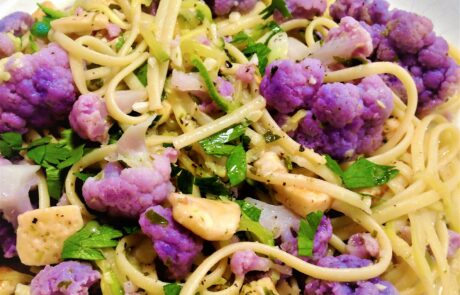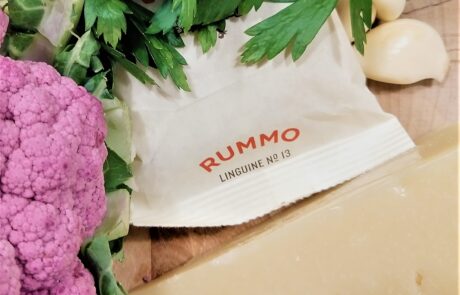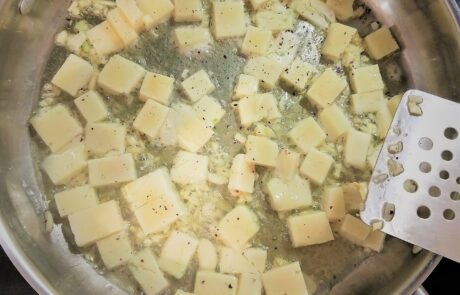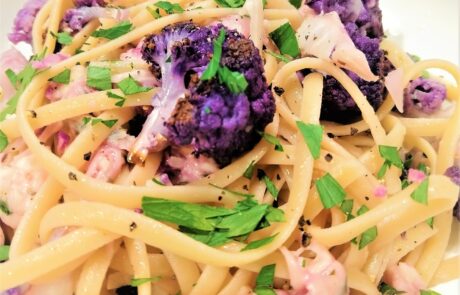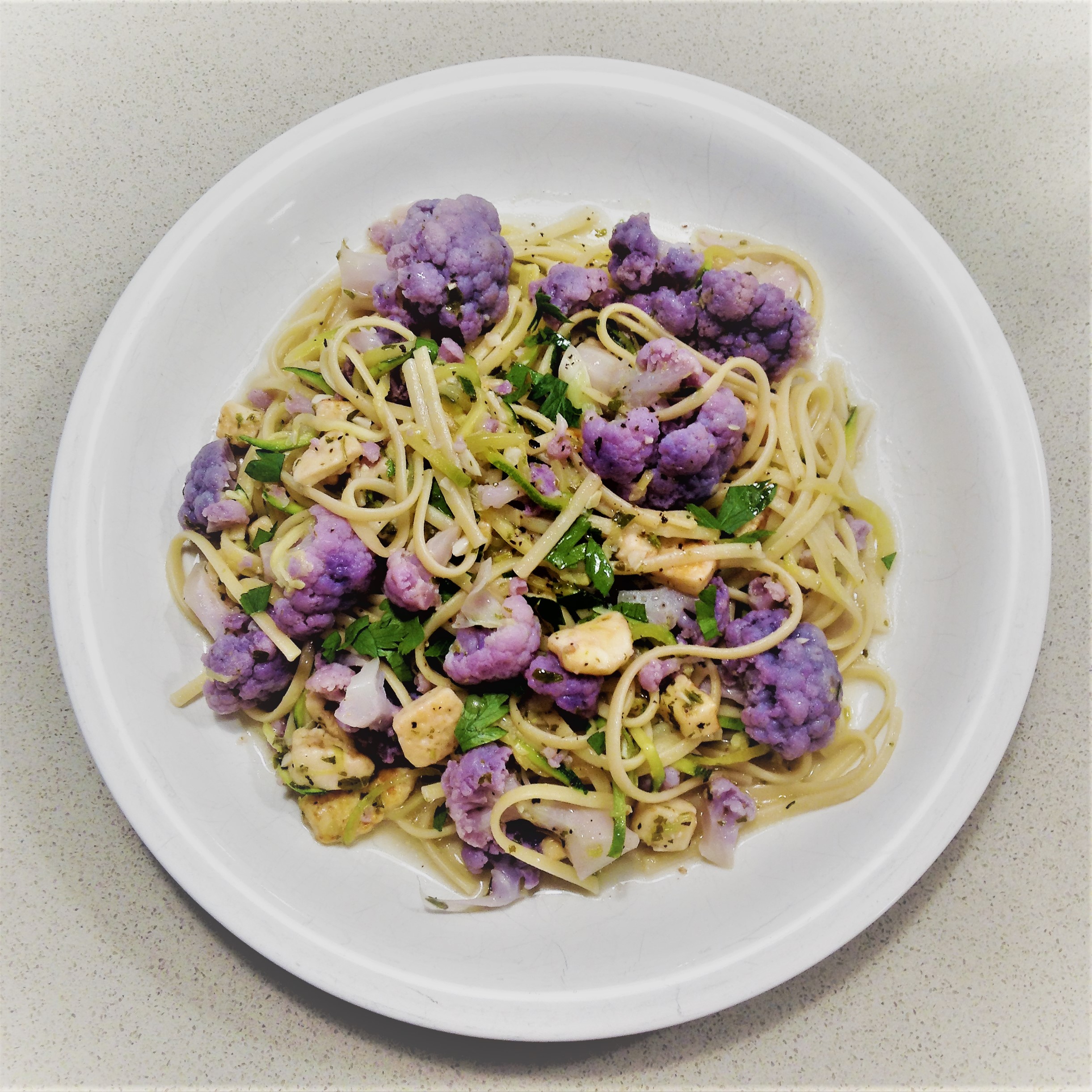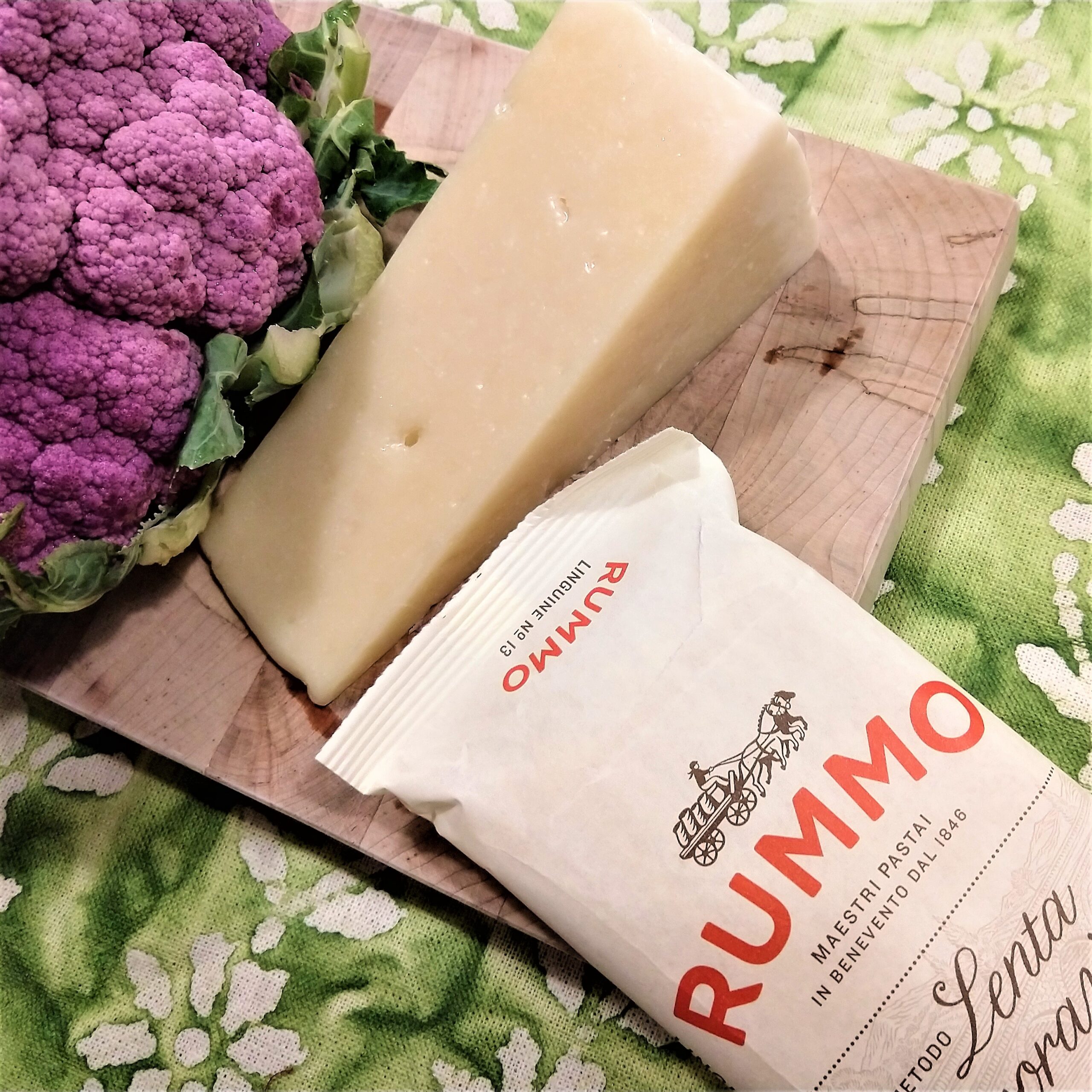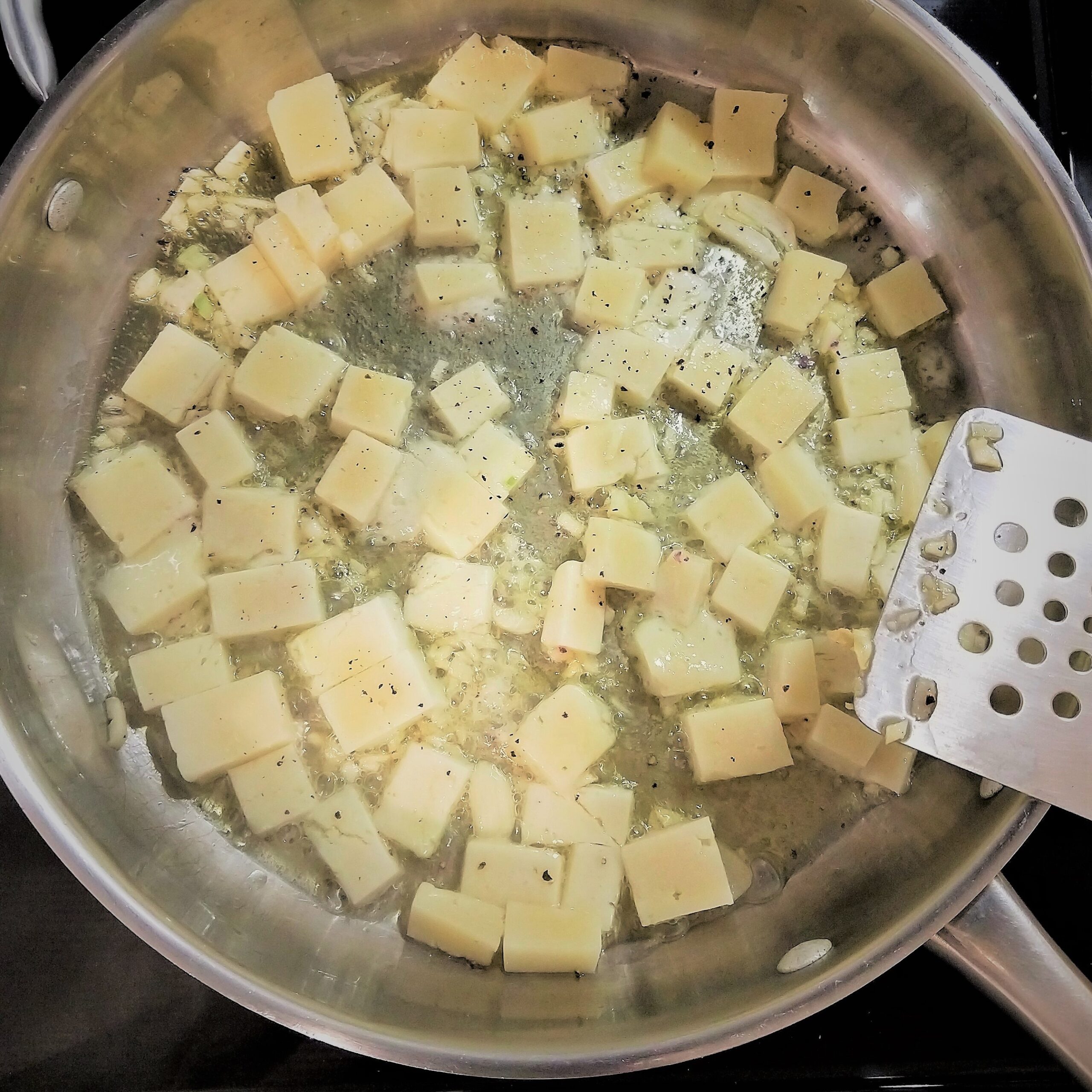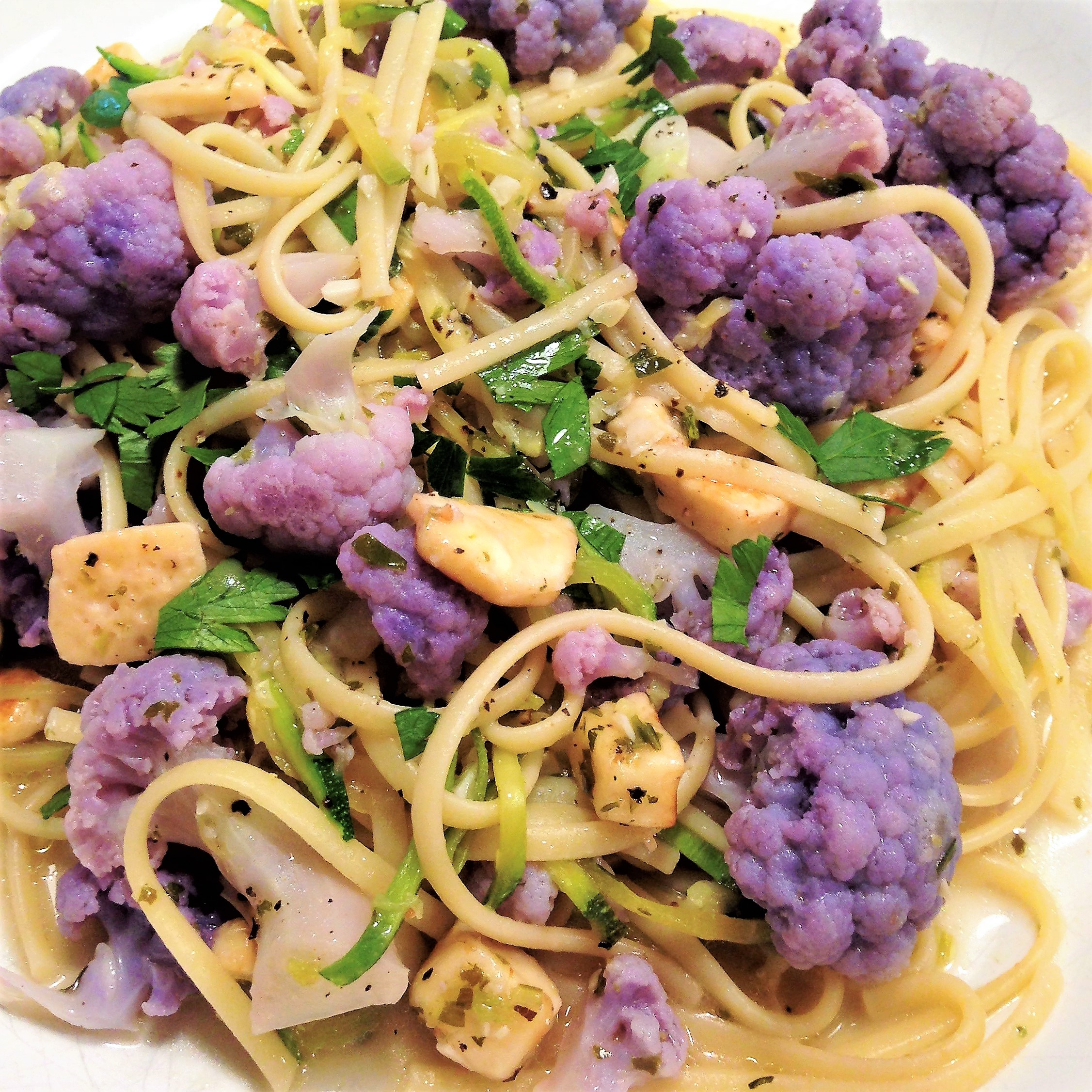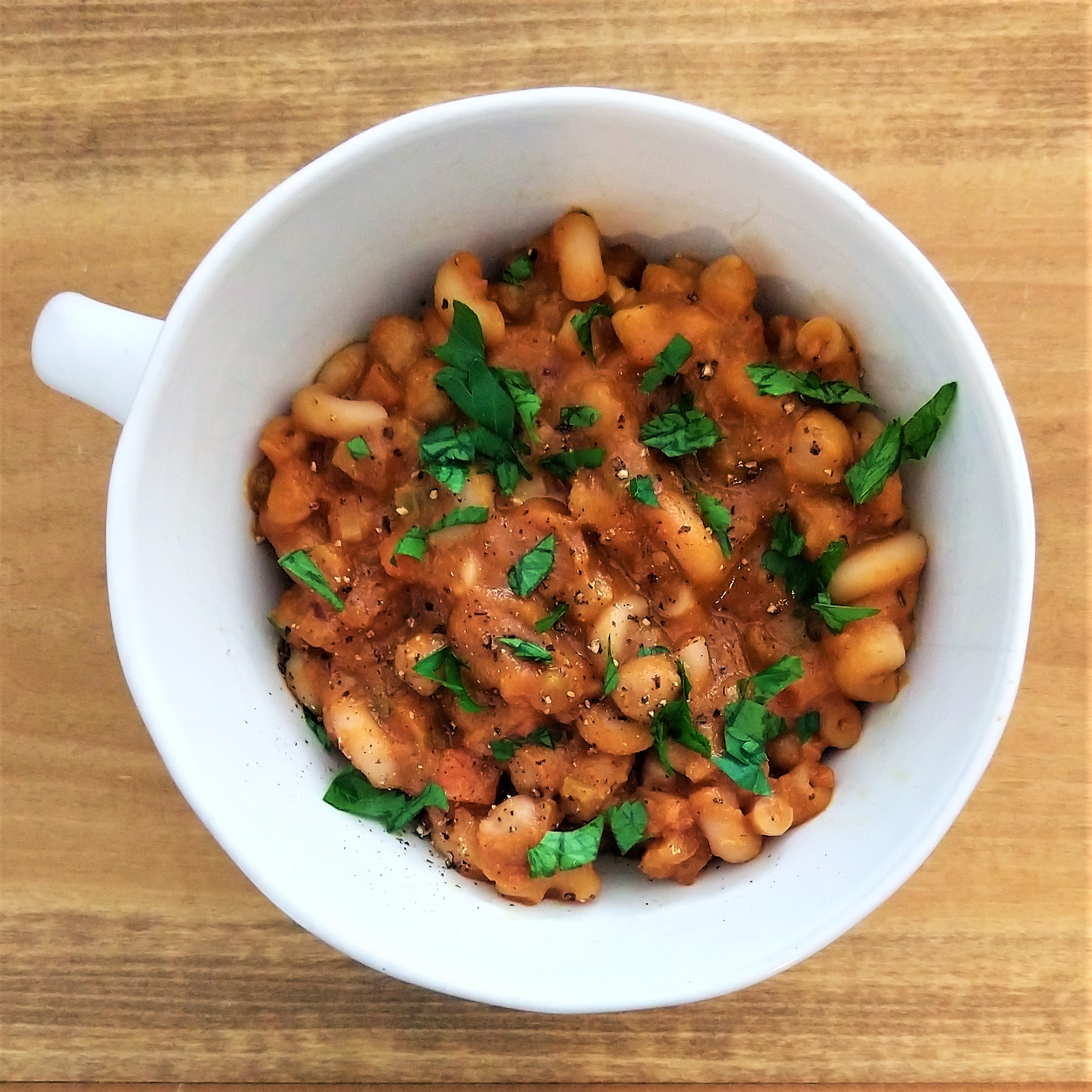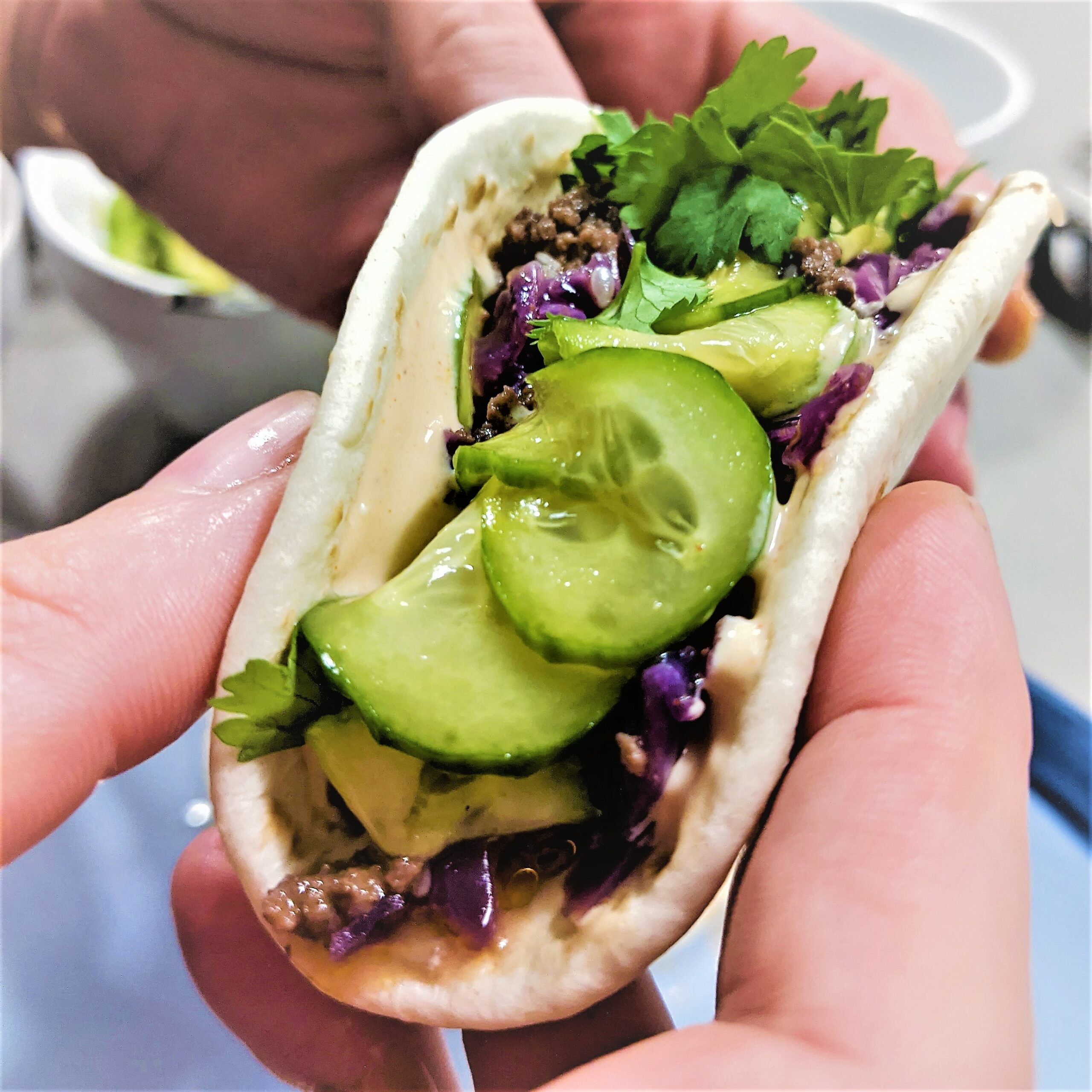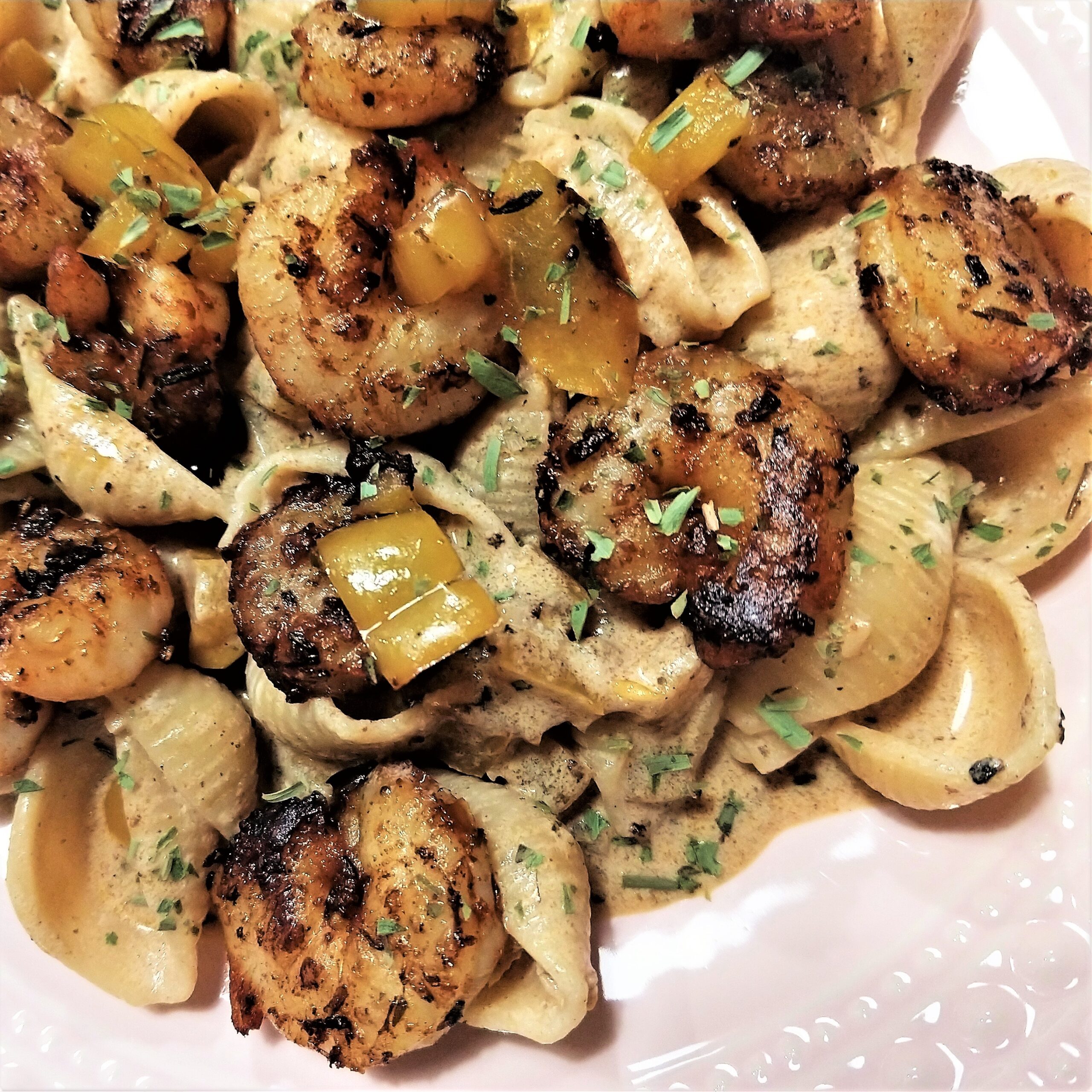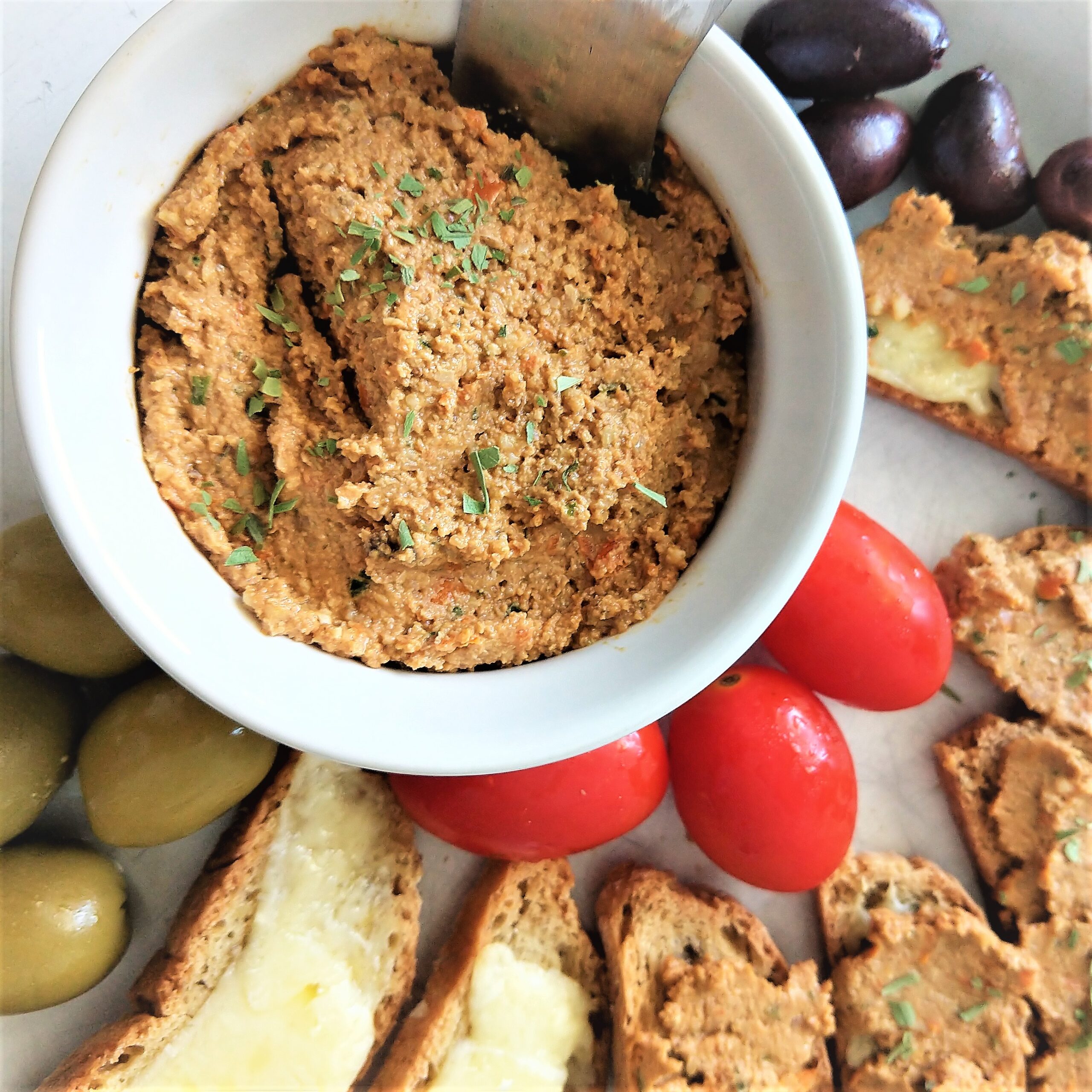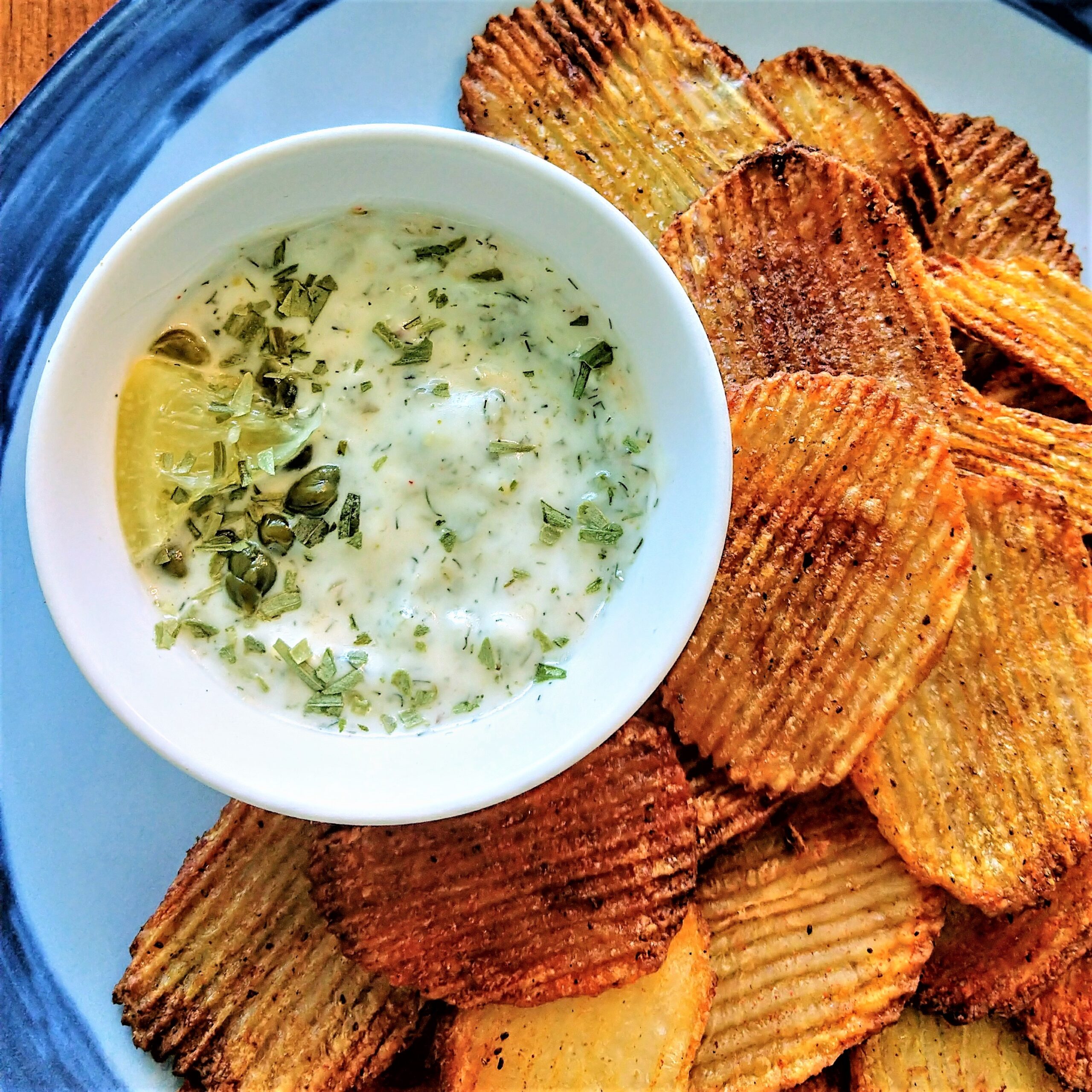This garlicky and cheesy pasta dish is an important family recipe that we’ve eaten my entire life. My Very Italian & Matriarchal Great-Grandmother always prepared “linguine and cauliflower” for her family and taught my grandma how to cook it. Eventually, my grandma taught me and my brother how to make the dish, which has evolved a bit over time. The way some people associate cravings and feelings of comfort with mac & cheese is how I feel about this recipe.
I fully credit this meal for being my gateway to cauliflower. Although I’ve learned to love vegetables, as a child I was much pickier. Until my teen years, this was the only way I would eat cauliflower. Now it’s one of my favorite veggies, especially showcased alongside garlic and a salty sheep cheese like pecorino romano.
LINGUINE E CAVOLFIORE
Prep:
~10 min
Cook:
~20 min
Total:
~30 min
A serving size of linguine is 2 oz (56 g dry) which makes 1 cup (~200 g) cooked, so we have calculated 8 servings for nutritional estimates. Halving the recipe serves 4 average adults; keep that in mind if you’re feeding teenagers or athletes. We live at sea level, but cooking at higher elevations will take more time.
INGREDIENTS:
- 6 quarts water (~5.69 L)
- 1 large cauliflower head* (7″ diameter/850 g)
- 8 medium garlic cloves
- 3 tbsp olive oil
- 8-9 oz (at least ~227 g) pecorino romano
- 1 lb linguine** (~454 g)
- Sea salt
- Black pepper
- ½ cup chopped parsley, for topping
- 1 tbsp light colored source of acidity, like white wine vinegar, lemon juice, or white balsamic vinegar
[Optional]
- Extra Cheese for topping: grated parmesan/grana padano/pecorino romano
*The photos for this recipe show purple cauliflower, which tastes similar to slightly nutty golden cauliflower. They are a bit milder and sweeter than white cauliflower, but all varieties work well. Picky eaters who love bowls of beige food may benefit from the lack of contrast between white cauliflower, cheese and linguine (especially if you chop the florets small and hide them!). That worked for me as a kid!
**Rummo No. 13 Durum Wheat linguine is an option available at many grocery stores. It’s a good compromise between cheap pasta and luxurious handmade pasta. It absorbs flavor and oils more effectively than some other common brands on the market in American grocery stores. They also make a gluten-free linguine.
STEP BY STEP:
NOTES: My ancestors came from Italy a few generations ago, so this is an Italo-American dish in a similar vein to “spaghetti and meatballs.” Yes, traditional versions of “pasta e cavolfiore” vary tremendously throughout Italy, and most incorporate cauliflower cooked down to a creamy sauce with grated cheese. It’s utterly delicious and well worth making, but for some reason I prefer the more intact florets and larger pieces of cheese. Pasta types vary according to region; Sicilians tend to use long pasta, for example. Between Naples, Sicily, and Tuscany, my great-grandparents had lots of regional influences at home.
SIP: This meal has a lot of salty and fatty flavors, so pairing it with more acidic wines creates a balanced experience for the palate. Wines made from Sangiovese grapes fit the profile beautifully, whether in a peppery Chianti blend or in other wines from Tuscan regions, like Montepulciano. Certain types of Merlot may also be complementary. If you don’t like such reds, I encourage you to enjoy a glass of dry rosé, Pinot Grigio, or even dry Riesling as long as it isn’t super sweet, jammy or part of iced wine production.
LANGUAGE FUN FACT:
The Italian word for cauliflower, cavolfiore, roughly means “cabbage flower.” Don’t these purple florets somewhat resemble hydrangeas? Although more reddish-purple while raw, they turn into a pretty periwinkle after having been boiled. Roasted ones assume a rich indigo hue.
BONUS: To roast the cauliflower leaves and stem, first make sure that they are clean and dry. Preheat the oven to 425 F (~218 C). Chop into pieces about 1 inch long. Toss with 1 tbsp olive oil (not extra virgin; avocado and canola oils are also fine at that heat), salt and pepper. Roast for 10 minutes, toss with a spatula, then roast for another 10 minutes until nice and crispy. You can eat them as snacks or use them in other recipes. For example, they are yummy in a burrito bowl with some extra cayenne, cumin, ancho, or other spices.
NUTRITION FACTS
Number of Servings: 8
Fiber: 4.29 g
Carbs: 49.39 g
Calories per Serving: 380.82 kcal
Sugar: 3.22 g
Protein: 12.55 g
Weight per Serving: 196 g
Fats: 15.70 g
Iron: 0.63 mg
All servings and nutritional measurements are approximate. These estimates are intended for information and guidance purposes only. Please consult a licensed nutrition or medical professional if you need assistance.

